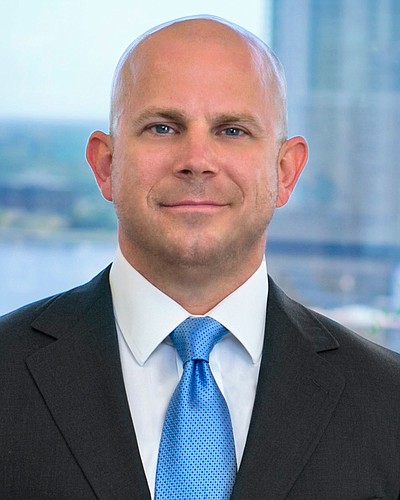
By Bill Adams
It’s a crowded room. Each side has several lawyers, there are boxes of documents and records and the mood is tense. The judge asks for introductions and the lead lawyers – each a senior member of their firm – respond dutifully, stating their name and then introducing the others on their team.
Argument starts and soon after, the court asks a question about the facts of the case. The male senior lawyer turns to the woman at his side, a junior lawyer, who quickly whispers the answer in response. The older attorney answers the court’s question and the hearing proceeds.
This scene repeats itself daily across the country. Anyone who has been in any court, state or federal, has seen it play out and chances are very good that you have played one or more roles in this drama. It’s so common as to be unremarkable.
But should it be?
The New York State Bar Association recently released a study considering the genders of attorneys appearing in court and examining their roles. The study’s results are sobering.
Across all cases in New York, female attorneys represented just 25.2 percent of counsel making an appearance. When looking at lead counsel roles, women took first chair in 24.9 percent of all cases, and that number dropped dramatically as the complexity of the matter, defined by the number of parties in a commercial case, increased.
The study report suggests a number of ways to address the issue, ranging from support programs in law firms to mentorship to initiatives pushed by clients.
Gender issues have been making headlines lately, but the legal profession knows this isn’t a new problem and has undertaken efforts to narrow the gender gap.
My own firm works to do its part; I suspect this is true in most offices. Progress might be being made in terms of hiring and retention, but when lawyers argue a motion or negotiate a deal, who is taking the lead?
The first sentence of the preamble to the Rules of Professional Conduct tells us that “[a] lawyer, as a member of the legal profession, is a representative of clients, an officer of the legal system, and a public citizen having special responsibility for the quality of justice.”
It strikes me that the last piece – that “special responsibility for the quality of justice” – compels us to strive to eliminate those things in our profession that create injustice.
We can certainly congratulate ourselves for supporting initiatives that advance equality, but is that enough?
If it were, I suspect the New York Bar Association’s report would read very differently and that scene I described wouldn’t be the norm in our courts.
So, what can be done?
Retired U.S. District Judge Shira Scheindlin wrote an op-ed in The New York Times about her work on the New York Bar Association’s report and her personal observations after 22 years on the federal bench. The title? “Female Lawyers Can Talk, Too,” which pretty much sums up the issue.
While there’s no doubt that we older, gray-haired gentlemen are great lawyers, it also is true that the younger female lawyer who did the work to get us ready for our brilliant performance could have done the job, if given the chance.
She did all the work, read all the documents, knows all the facts, and is more than ready to complete the job, if we will just get out of the way.
Experience is certainly valuable, but there’s only one way to gain it and if we don’t actively look to provide those opportunities, all the initiatives and donations won’t matter one bit. The only way to close the gender gap in the courtroom is to actually close it, which means that someone has to step aside and provide the space for female lawyers to speak.
But that’s not where this stops.
Opposing counsel (again, statistically likely to be an older man) has a role to play too. When your worthy opponent hands the lead to that young lawyer, be supportive. You don’t have to pull any punches on the merits, but treat that lawyer with respect.
Judges (also probably male), if someone tries to take advantage of youth or inexperience, step in and give a reminder of the importance of treating all counsel with dignity, civility and courtesy.
Bottom line, the gender gap in the courtroom didn’t create itself and it’s not a “female lawyer” problem. It arises from ideas that have no place in our profession and it can only be closed by the participants in the courtroom.
It’s well past time that we all did our part.
Bill Adams is a mediator, commercial litigator and the managing shareholder of Gunster, Yoakley & Stewart’s Jacksonville office.